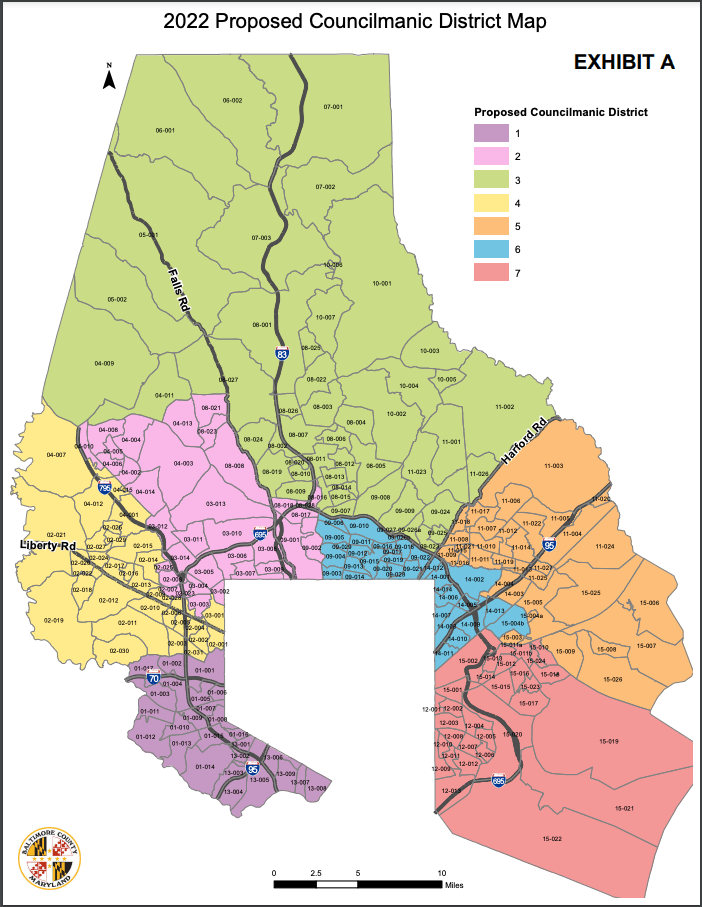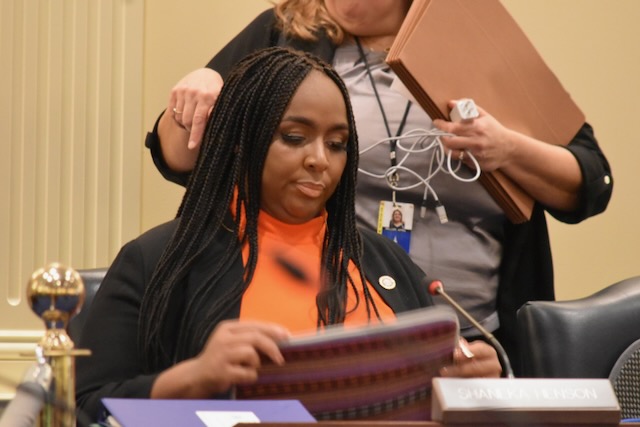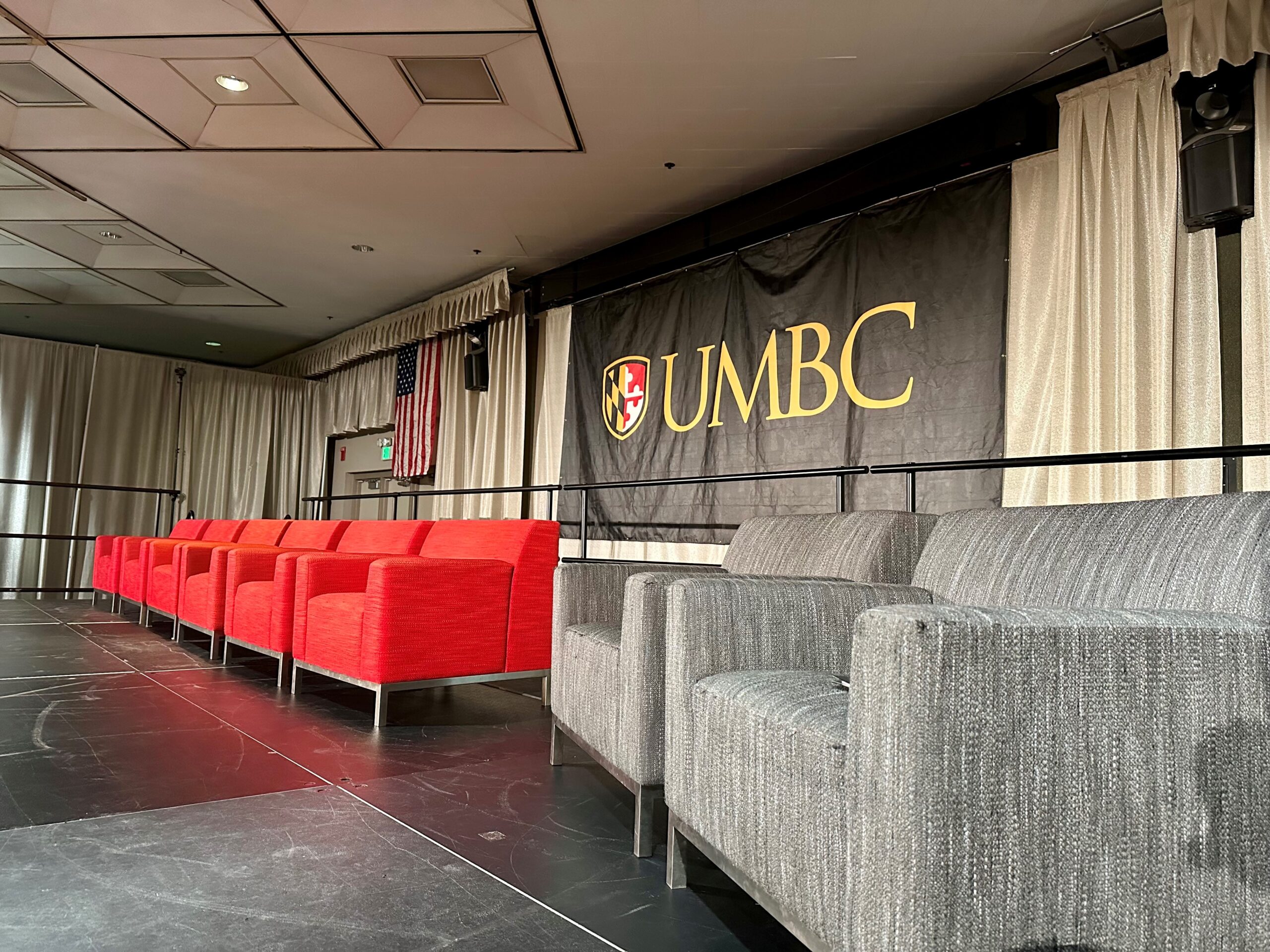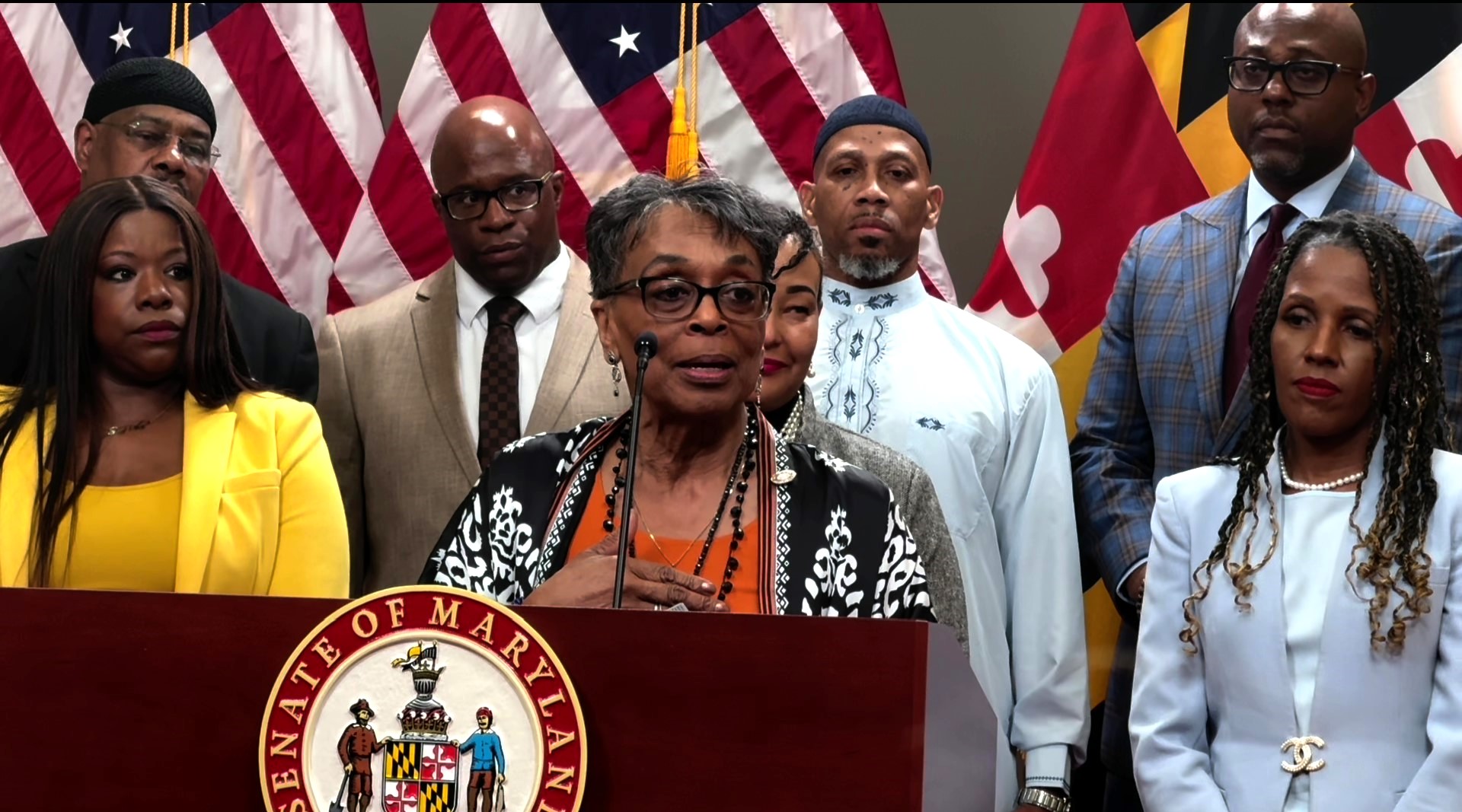In Redistricting Lawsuit, Baltimore County Argues New Map Doesn’t Dilute Black Votes

Baltimore County officials want a lawsuit against the jurisdiction’s new council districts thrown out, arguing in legal filings that the map doesn’t dilute the power of Black voters despite keeping just one majority Black district.
Five of seven districts in the redistricting plan approved by the county council in December are majority white and another has 46.17% white plurality. Similar to current maps, one district would be majority Black at 72.59%, according to data released by the Baltimore County Council.
Roughly 30% of county residents are Black and almost half of county residents are people of color, according to U.S. Census data, reflecting increasing diversity in the county.
Civil rights advocates say the map violates the federal Voting Rights Act, a federal law that bans cracking, or “fragmenting the minority voters among several districts where a bloc-voting majority can routinely outvote them,” according to the U.S. Department of Justice, or by “packing them into one or a small number of districts to minimize their influence.”
The Baltimore County NAACP, Common Cause Maryland and the League of Women Voters of Baltimore County, alongside several Black voters from the county, filed a lawsuit in December against the county’s redistricting plan.
Plaintiffs in that lawsuit, including state Sen. Charles E. Sydnor (D-Baltimore County) and American Civil Liberties Union of Maryland Executive Director Dana Vickers Shelley, say the redistricting plan approved by the Baltimore County Council illegally packs Black voters into District 4, diluting their overall influence.
That majority Black district was drawn in 2001 after a push from civil rights activists. Residents of the lone majority Black district have elected a Black council member in every election since it was created, while majority white districts have elected white council members. Baltimore County Council Chair Julian E. Jones Jr. (D) remains the only Black council member.
Plaintiffs in the lawsuit are seeking a preliminary injunction to prevent the new maps from being used. But in a Jan. 31 filing, attorneys for Baltimore County argued that the new map doesn’t dilute Black voters’ power in other districts, pointing to the success of candidates preferred by Black voters in neighboring Districts 1 and 2.
“Although no other Black candidates have run for County Council in those districts, Black-preferred candidates have run and won Council seats, while Black candidates who are also Black-preferred candidates have run for and won other local elections out of the same districts,” the Jan. 31 filing reads.
Attorneys for the county also asked that the case be dismissed in court filings.
Baltimore County Council districts mirror school board districts, and attorneys for the county point to the election of Cheryl Pasteur, who is Black, to the county’s school board in District 2 in 2018 as evidence that the map doesn’t dilute Black votes.
“Ms. Pasteur’s election shows that Black candidates have run in District 2 as the Black-preferred candidate and have won — meaning no white majority bloc defeated them,” the filing reads. “Nor did any white majority bloc defeat the Black-preferred candidates Tom Quirk and Izzy Patoka. As a result, Plaintiffs do not show that any white voting bloc ‘usually’ or ‘typically’ defeats Black-preferred candidates in Districts 1 and 2 and particularly not in District-specific elections.”
Pasteur, a longtime educator who is now the vice chair of the Baltimore County Board of Education, filed a declaration supporting the lawsuit against the new map. In that declaration, she said her opponent at the time didn’t have experience in education, raised no money and only attended one of four candidate forums. She wrote that she recruited more than 200 volunteers throughout her campaign.
“I was constantly thinking that I had to campaign harder than my opponent regardless of my credentials,” Pasteur wrote.
In a response to the county’s filing, the plaintiffs also pushed back against the notion that Pasteur’s election proves the map doesn’t dilute Black voters’ power.
“Even if Ms. Pasteur had competed in a typical contested election, she is the only example throughout all Baltimore County history of a Black candidate getting elected to County-level office outside of District 4,” the plaintiffs’ response reads. “The County repeatedly cites Ms. Pasteur’s election to overstate the success of Black-preferred ‘candidates’ in the plural when it should use the singular.”
A hearing on the plaintiffs’ motion for a preliminary injunction is set for Feb. 15 at 2 p.m. in U.S. District Court.




 Creative Commons Attribution
Creative Commons Attribution